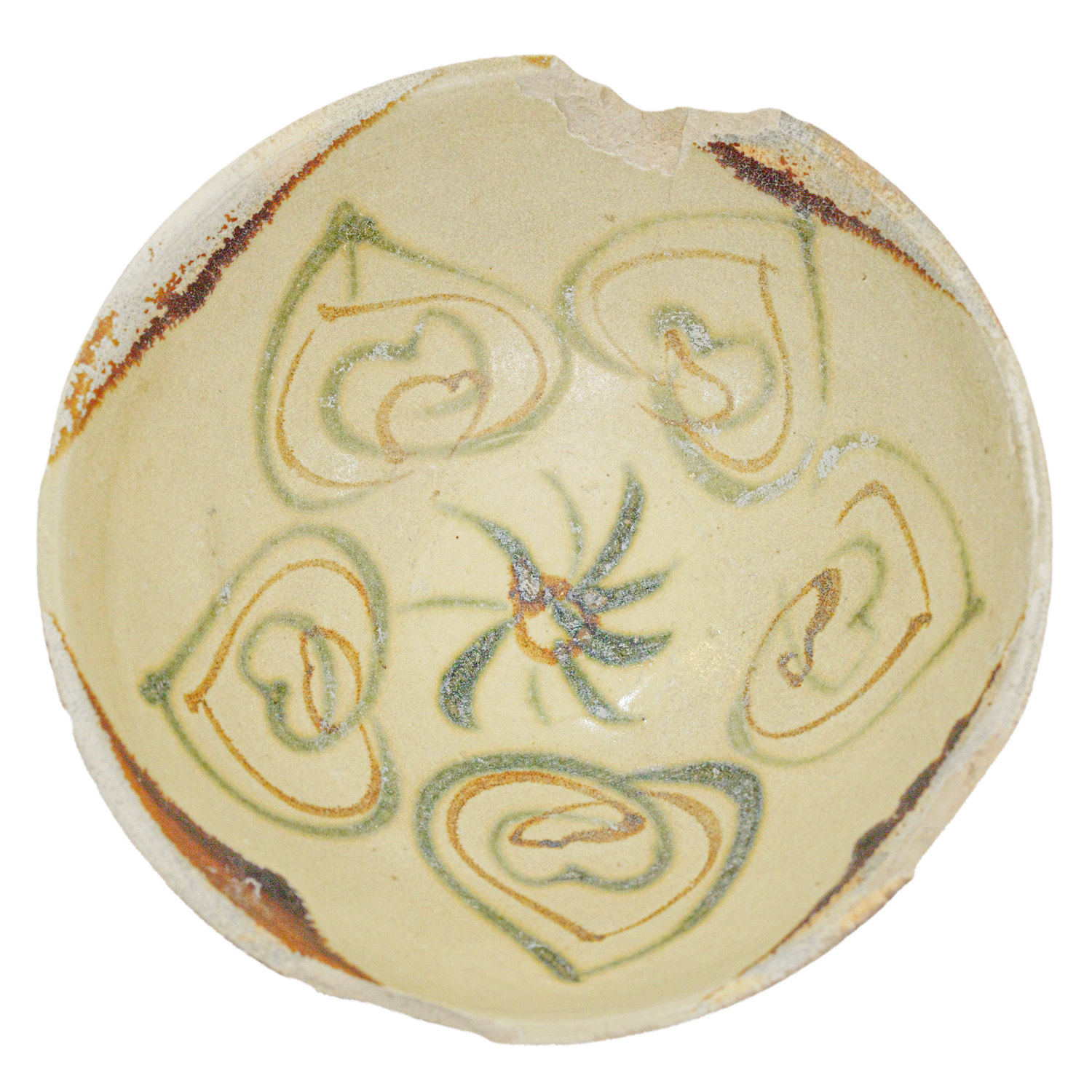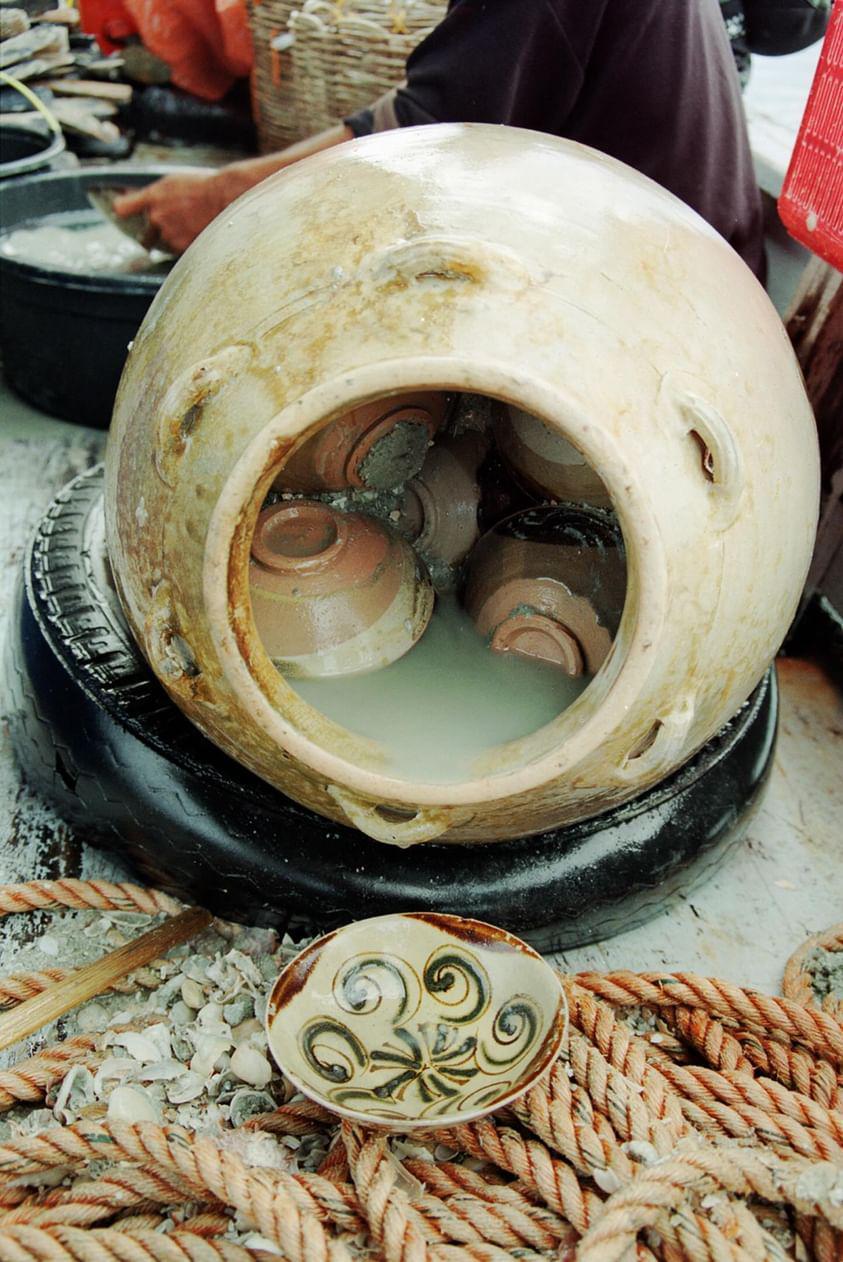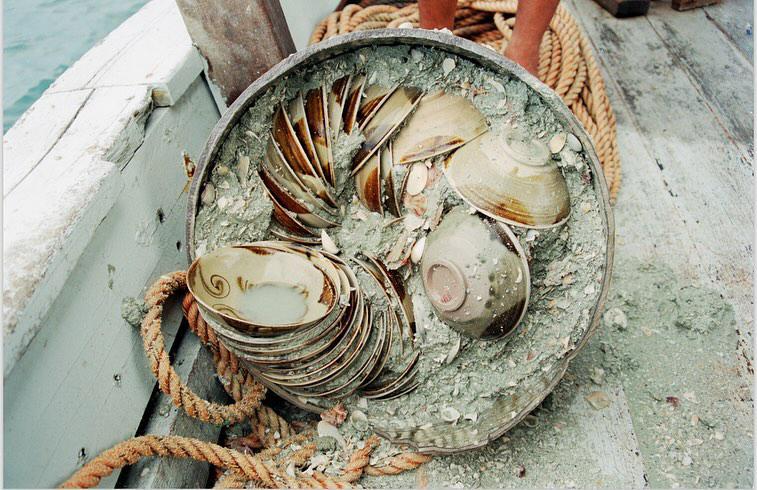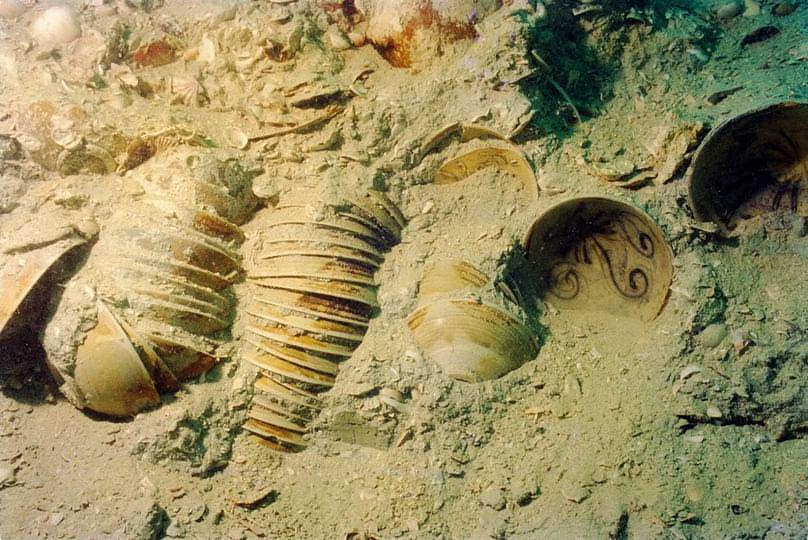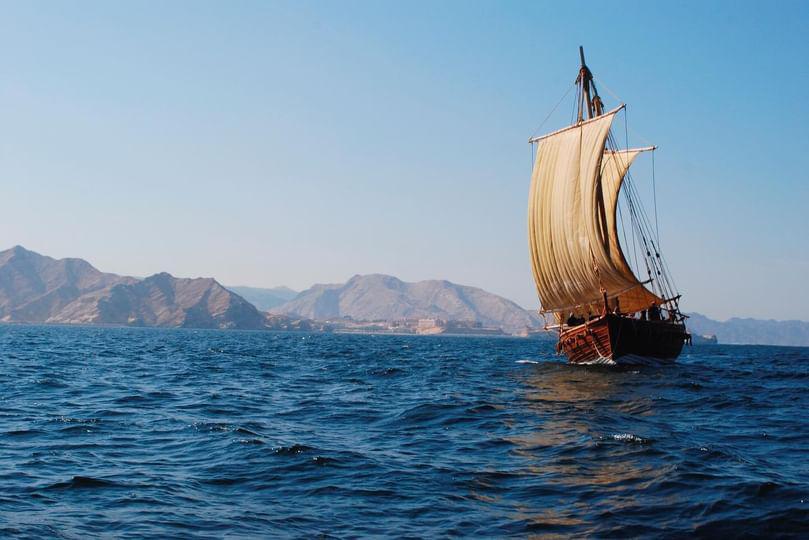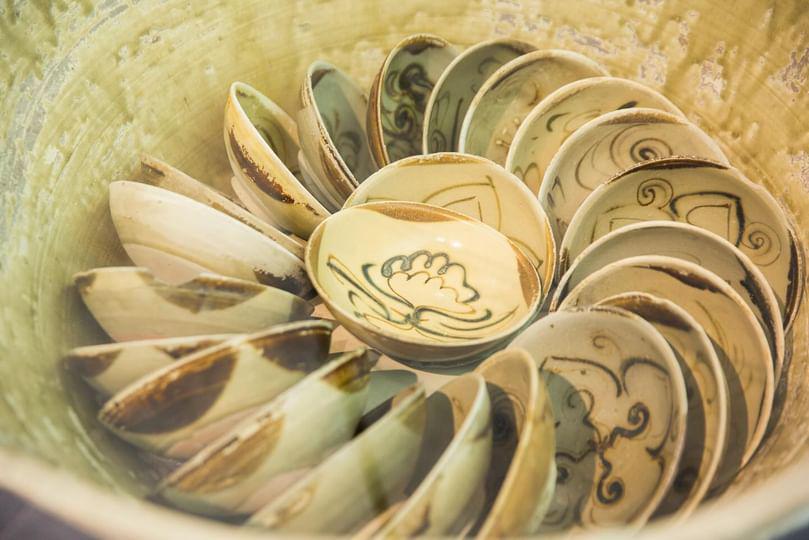Changsha Bowl
Changsha, Hunan, Cina, abad ke-9 M
Marine Heritage Gallery, Jakarta
This Changsha Bowl was one of around 50,000 such objects recovered from the 9th century Belitung shipwreck, found off the coast of Belitung Island by local fishers. Later known as the Tang shipwreck, this was a western Indian Ocean-style vessel carrying a large cargo of Tang Dynasty (618–907 CE) ceramics and believed to be destined for the Middle East when it was wrecked in what would become Indonesian waters. The Belitung shipwreck was commercially salvaged in 1998-1999 from a depth of 17 metres (56 feet) by PT Sulong Segarajaya in collaboration with Seabed Explorations with a permit from the Government of Indonesia.
The vast majority of Belitung’s cargo consisted of these Changsha bowls, which feature a polychrome underglaze with iron and copper pigments conjuring colours of red, green, and brown. Some motifs appear frequently, such as mountains, landscapes, and animals, with individual variations across these common designs providing glimpses of the people who painted them. Some designs appear less often: Buddhist stupas and swastikas, banners or steles, a poem in Chinese characters, even a sea monster.
The Changsha bowls were carefully packed in large jars for transport, padded with straw or mung beans, before being loaded as cargo. The discovery of such a large quantity of these bowls on the Belitung shipwreck indicates the high demand for Chinese ceramic exports, facilitated by maritime trade routes, during the Tang Dynasty.
This bowl reveals the advanced technology of 9th century Chinese ceramicists, capable of producing sophisticated motifs under the glaze layer to add artistic value. More broadly, the Belitung shipwreck highlights the important role of the Indonesian archipelago in global trade networks, through which all ships sailing between ports in China and the Middle East had to transit.
Catalogue Number: 7BH 01 24 11 17 0030
Material: Stoneware, glaze
Dimensions: Height 6 cm, Diameter 16 cm

